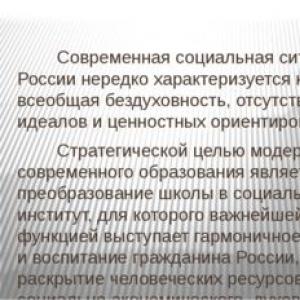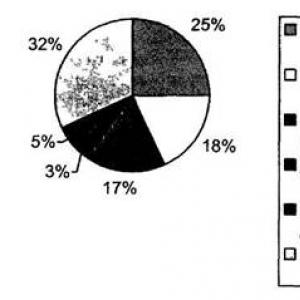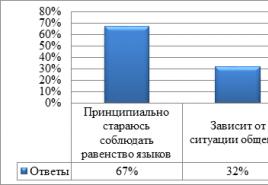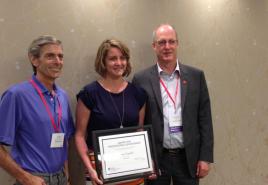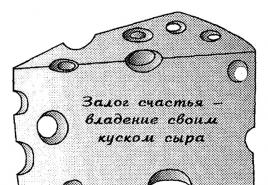What are permanent morphological and non-permanent signs of a verb. Morphological signs of parts of speech
Verb parsing plan
| I | Part of speech, general grammatical meaning and question. | ||
| II | Initial form (infinitive). Morphological signs: | ||
| A | Permanent morphological features: | ||
| 1 | view (perfect, imperfect); | ||
| 2 | recurrence (irrevocable, returnable); | ||
| 3 | transitivity (transient, intransitive); | ||
| 4 | conjugation; | ||
| B | Variable morphological features: | ||
| 1 | mood; | ||
| 2 | time (in the indicative mood); | ||
| 3 | number; | ||
| 4 | face (in the present, future tense; in the imperative mood); | ||
| 5 | genus (in singular past tense and subjunctive mood). | ||
| III | Role in the proposal (which member of the sentence is the verb in this sentence). | ||
Samples of parsing verbs
Do you like to ride - love to carry sledges (proverb).
Do you love
- what are you doing?
- N. f. - be in love... Morphological signs:
1) imperfect appearance;
2) irrevocable;
3) transitional;
4) II conjugation.
2) the present;
3) singular;
4) 2nd person.
Ride
- Verb; indicates an action; answers the question what to do?
- N. f. - ride... Morphological signs:
A) Permanent morphological features:
1) imperfect appearance;
2) returnable;
3) intransitive;
4) I conjugation.
B) Variable morphological characters. Used as an infinitive (immutable form). - In a sentence, it is part of a compound verb predicate.
Love
- Verb; indicates an action; answers the question what do you do?
- N. f. - be in love... Morphological signs:
A) Permanent morphological features:
1) imperfect appearance;
2) irrevocable;
3) transitional;
4) II conjugation.
B) Variable morphological characters. Used in the form:
1) imperative mood;
2) singular;
3) 2nd person. - In a sentence, it is part of a compound verb predicate.
Plowing began (Prishvin).
Started
- Verb; indicates an action; answers the question what did you do?
- N. f. - start... Morphological signs:
A) Permanent morphological features:
1) perfect view;
2) returnable;
3) intransitive;
4) I conjugation.
B) Variable morphological characters. Used in the form:
1) indicative mood;
2) the past tense;
3) singular;
4) feminine. - In a sentence, it is a predicate.
Official and significant parts of speech are contained in Russian. The verb belongs to independent parts of speech. "To verb" in the Old Russian language meant "to speak". Thus, even the ancestors proved that literate speech is impossible without the dynamics of narration, which is achieved by using verbs.
What is a verb: morphological and syntactic features
The verb speaks of the action of the object. Determine the verb on the questions "what to do?", "What to do?" When characterizing a verb, attention is paid to its grammatical meaning, morphological features and function in the sentence. The grammatical features of the verb are divided into permanent and non-permanent.
Scientists' points of view on isolation verb forms diverge. There is still debate over whether to single out the participle and gerunds in the significant parts of speech, or they are just forms of the verb. We will consider them as independent ones.
The grammatical meaning of the verb
Grammatically, a verb speaks of the action of an object. There are several groups of actions that are expressed by verbs:
- Work, labor of the subject of speech: "sharpen", "drive", "build", "dig".
- Speech or mental activity: "Speak", "suppose", "think", "find out".
- The movement of an object in space, its position: "ride", "be", "sit", "be located".
- The emotional state of the subject of speech: "sad", "hate", "cherish", "love".
- condition environment: "Evening", "freezing", "drizzling".
In addition to the general grammatical meaning of the verb, it is worth mentioning its syntactic function. In the sentence, he is one of the main members, the predicate. The predicate verb agrees with the subject and forms the predicative basis of the sentence with it. From the verb, they pose questions to the secondary members of the predicate group. As a rule, these are additions and circumstances expressed by nouns, adverbs or gerunds.
How the verb changes: permanent and non-permanent signs
Morphological signs of the verb are divided into permanent and non-permanent. This gradation occurs from the point of view of changing the word itself or only its form. For example, “read” and “read” are two different words. The difference is that “read” is an imperfect verb, and “read” is a perfect one. They will change in different ways: the perfective verb “read” is not supposed to have a present tense. And "I read" - we read only indicate the number of the verb to read.

Constant signs of the verb:
- kind (imperfect, perfect);
- conjugation (I, II, multi-conjugate);
- returnable (irrevocable, returnable).
- gender (female, middle, male);
- mood (subjunctive, indicative, imperative);
- number (plural, singular)
- time (present, past, future);
These signs are formative. Therefore, when parsing a verb, they say that it stands in the form of a certain tense, mood, gender and number.
The declension of the verb
The grammatical features of the verb contain mood. One verb can be used in the form of the indicative, subjunctive (conditional) and imperative moods. Thus, this category is included in the non-permanent signs of the verb.

- Indicative. It is characterized by the fact that the verb in this form can be used in the present, future and past tenses: "the child is playing" (present); “The child was playing” (past tense); "The child will play" (future tense). The indicative mood allows you to change the verb by person and number.
- Conditional (subjunctive) mood. It is an action that can only happen under certain conditions. It is formed by joining the main verb of the particle would (b): "With your help, I would cope with difficulties." It is possible to change the conditional mood verbs in terms of numbers and gender, in these forms they agree in a sentence with the subject: "She would have solved this problem herself"; “They would have solved this problem themselves”; “He would have solved this problem himself”; "Most would have solved this problem on their own." It is important to note that the conditional mood does not imply a change in the verb by tenses.
- Imperative mood. Indicates the motivation of the interlocutor to action. Depending on the emotional coloring, the motivation is expressed both in the form of a wish: "Please answer the question" and in the form of an order: "Stop shouting!" To get an imperative verb in the singular, it is necessary to add the suffix -i to the stem in the present tense: "sleep - sleep", it is possible to form it in a non-suffix way: "eat - eat". The plural is formed with the suffix -te: "draw - draw!" The change of the verbs of the imperative mood occurs in numbers: "eat soup - eat soup". If it is necessary to convey a sharp order, the infinitive is used: "I told everyone to stand up!"
Verb tense
The morphological features of the verb contain the category of tense. Indeed, any action can be distinguished by the time at which it occurs. Since the verb changes in tenses, this category will be unstable.


Verb conjugations
The grammatical features of the verb cannot be fully characterized without the category of conjugation - their changes in persons and numbers.
For clarity, we give a table:
Other signs of the verb: appearance, transitivity, reflexivity

In addition to conjugation, the constant grammatical features of the verb contain categories of form, transitivity and reflexivity.
- The kind of verb. Distinguish between perfect and imperfect. The perfect view presupposes the questions "what to do?" Indicates an action that has achieved a result ("learn"), began ("sing"), or ended ("sing"). The imperfect is characterized by the questions “what to do?”, “What is it doing?”. Assumes an action that continues and repeats itself ("jump").
- Reflexivity of the verb. It is characterized by the presence of the suffix -sya (-s).
- Transitive verb. Determined by the ability to control a noun without a preposition in accusative case ("To imagine the future"), if the verb has the meaning of negation - with transitivity, the noun will stand in the genitive case: "I do not observe it."
So, the signs of the verb as parts of speech are diverse. To determine its permanent features, it is necessary to put a part of speech in its initial form. To identify inconsistent features, it is necessary to work with the verb taken in the context of the narrative.
Words differ among themselves not only in lexical meaning. All of them are usually divided into groups - parts of speech. This gradation occurs on the basis of the grammatical meaning of words and their special features - morphological.
Morphology - section of the Russian language
Parts of speech are dealt with by a whole section of science called morphology. Any word has its characteristic characteristics: general meaning, grammatical, also morphological and syntactic features. The first indicates the same meaning of a particular part of speech. For example, the designation of an object by nouns, its sign by adjectives, verbs - action, and participles - a sign by action.
Syntactic features are the role of a particular part of speech in a sentence. For example, verbs, as a rule, are predicates, less often - subjects. Nouns in a sentence can be additions, circumstances, subjects, and sometimes predicates.
What are the morphological signs
The group of morphological characters, permanent and non-permanent, is much more extensive. The first characterize the word as a specific part of speech. For example, a verb is always determined by conjugation, form, transitivity. Variable morphological signs indicate that a part of speech has the ability to change. For example, a noun changes in cases and numbers - these will be its inconstant signs. But the adverb and the verbal participle are unchangeable parts of speech, respectively, they only need to indicate permanent signs. The same is true for the service parts of speech and interjections.
Before analyzing the morphological features of parts of speech, it is worth noting that it is necessary to distinguish between a word and its form. Words differ in lexical meaning, and when they change, their forms are formed. For example, the word "site" has lexical meaning "Fenced part of the area", and its forms will be a change in cases: plot, plot, plot, about the plot.
Noun
Indicating the constant morphological features of a noun, we talk about whether it is common or proper, animate or inanimate, and also determine the type of declension and gender.
Common nouns denote a collection of objects without distinguishing them individual traits... For example, by the word "river" we designate all rivers: large and small, northern and southern, full-flowing and not very. But if we indicate a specific river, one of a kind, for example, the Neva, the noun will be proper.

Objects of living nature belong to animate nouns, all the rest - to inanimate. These are permanent morphological features of a noun. Dog (who?) - animate; table (what?) - inanimate. Also, the nouns of these categories differ in the forms of the accusative and genitive cases. Endings in genitive and accusative plural coincide in animate, in inanimate - accusative and nominative.
Let's give an example. Genitive case: no (who?) Cats; accusative: I see (whom?) cats. Let's compare: I see (what?) Chairs; there are (what?) chairs.
The following genera are distinguished: male, female and middle. To determine these morphological features of a noun, it is necessary to substitute the pronouns mine - mine - mine, respectively.
The declension of nouns is presented in the table:
Variable morphological features of a noun are its case and number. Forms of the noun word are formed by these categories.
Adjective
Just like a noun, the morphological features of an adjective are subdivided into permanent and non-permanent.
The first are its category, degree of comparison and form, complete or short.

Adjectives are classified as qualitative, relative, and possessive. The first can be in the subject in one way or another, they can appear in full or short form, and also form degrees of comparison. For example: beautiful is a qualitative adjective. Let's prove it. It is characterized by such morphological features of the adjective as the degree of comparison (more beautiful, more beautiful) and short form (handsome). Relative adjectives cannot have these categories (golden, hazy, razor-sharp). Possessives denote belonging, they answer the question "whose?"
Comparison grades are categorized as comparative and excellent. The first shows a greater or lesser degree of some quality: the tea is sweeter - less sweet - sweeter. Superlative denotes the highest or lowest degree of the trait: shortest, funniest, smallest.
The full and short form is inherent in quality adjectives. It should be remembered that the short ones do not incline, but they can be changed by number and gender: cheerful ( full form) - oars (m.rod, singular number) - merry (f.r., singular. h) - merry (plural).
Variable morphological signs of an adjective - case forms, numbers and gender in which it is used. The gender category can be determined only for adjectives in the singular.
Numeral
Constant morphological features of a word that is a numeral name are its category and characteristics of the structure.
Allocate cardinal and ordinal numbers. The former require an answer to the question "how much?" (ten, fifteen, twenty-five), the second - "which one?" (tenth, fifteenth, twenty-fifth).

- Simple (five, second).
- Difficult (thirteen, fifteenth).
- Composite (twenty two, three hundred forty one).
The inconstant signs of a numeral's name are largely determined by its rank. So, for cardinal numbers, only cases change is characteristic. Ordinal numbers are close in grammatical parameters to adjectives, so they can form case forms, change in numbers and gender.
Pronoun
If we talk about a pronoun, then its morphological features largely depend on which part of speech it is close to in terms of grammatical meaning. They can gravitate towards a noun, adjective, or number. Let us analyze pronouns and their morphological features in this context.
Pronouns-nouns are characterized by the unchangeable category of the person (personal) and the formative gender, number, case.
Adjective pronouns can also be changed by gender, number and case. The exception is the words her, him, them - they do not change in cases.
Only the case form have pronouns - numerals.
So, when determining what morphological features a pronoun has, you first need to look at the category and, accordingly, indicate the remaining characteristics.
Verb: constant signs
Constant morphological features of the verb are its appearance, transitivity, reflexivity and conjugation.
There are two types of verbs, perfect and imperfect. The first involves the question "what to do?", The second - "what to do?" For example, move (what to do?) - perfect view; move (what to do?) - imperfect view.

The category of transitivity assumes that the verb controls the noun in the accusative form without a preposition. All other verbs will be intransitive. Let's give an example: to hate (who, what?) The enemy, lies, fog - a transitive verb. Go into the house, fly across the sky, jump over a step, get sore throat - these are intransitive verbs, nouns with prepositions, and the accusative case cannot be made up.
The reflexive verb has the suffix -sya (-s): to swim, bathe (reflexive); bathing is irrevocable.
We present the conjugation of the verb in the table:
Verb: inconsistent signs
Variable morphological features of the verb - its number, mood, gender, tense and face. These categories are largely determined by others. For example, the verbs of the indicative mood change over time. Imperfective verbs are unique and have three tense forms.
The verbs of the Russian language have three mood forms: indicative (I bake, I will bake, I baked), imperative (bakes) and conditional (would bake).
Verbs also change in gender: he swam, she swam, it swam. This category is typical for past tense verbs.
The face of the verb indicates by whom the action is performed: by the speaker himself (I remove), the interlocutor (you remove) or the subject / person of the conversation (she removes).
As with the pronoun, you first need to look at the category and, accordingly, indicate the remaining characteristics.
Participle
Constant morphological signs of a participle are appearance, transition, recurrence, pledge and time.
Just like verbs, participles are of a perfect and imperfect form: working (what to do? To work) is an imperfect form; who built (what to do? build) is a perfect view.

If a participle is formed from a transitive or reflexive verb, the same signs will remain with him. For example, from the transitive verb “to lock” the participle “locking” is formed - it also has this category. From the reflexive verb "to lock", the participle "lockable" is formed, respectively, also reflexive.
The participles can be valid (the sign is performed by the object itself: the thinker is the one who thinks) and passive (the object experiences the effect of the sign: a written book is a book that has been written by someone).
Two forms of time can be distinguished in participles: present (playing) and past (playing).
Variable morphological signs of a participle are similar to an adjective: gender, number, case, form (short or full).
Gerunds
The verbal participle is an unchangeable part of speech, therefore, exclusively constant signs are determined in it:
- View. Perfect (doing what? - reading) and imperfect (doing what? - reading).
- Transitivity. It is transmitted from the verb: having decided (to solve - a transitive verb); walking (to go is an intransitive verb).
- Recoverability. Distributed - recurrent participle; distributing - irrevocable.
Adverb
Just like a verbal participle, an adverb does not form a form. Thus, only constant morphological signs are indicated for him: category by meaning and if the adverb is qualitative, i.e. formed from the name of an adjective, indicate the degree of comparison.

For example, the adverb "cheerfully" is formed from the adjective cheery, so the formation of degrees of comparison is possible: cheerfully (positive); more fun (comparative); most fun (excellent).
Verb parsing plan
| I | Part of speech, general grammatical meaning and question. | ||
| II | Initial form (infinitive). Morphological signs: | ||
| A | Permanent morphological features: | ||
| 1 | view (perfect, imperfect); | ||
| 2 | recurrence (irrevocable, returnable); | ||
| 3 | transitivity (transient, intransitive); | ||
| 4 | conjugation; | ||
| B | Variable morphological features: | ||
| 1 | mood; | ||
| 2 | time (in the indicative mood); | ||
| 3 | number; | ||
| 4 | face (in the present, future tense; in the imperative mood); | ||
| 5 | genus (in singular past tense and subjunctive mood). | ||
| III | Role in the proposal (which member of the sentence is the verb in this sentence). | ||
Samples of parsing verbs
Do you like to ride - love to carry sledges (proverb).
Do you love
- what are you doing?
- N. f. - be in love... Morphological signs:
1) imperfect appearance;
2) irrevocable;
3) transitional;
4) II conjugation.
2) the present;
3) singular;
4) 2nd person.
Ride
- Verb; indicates an action; answers the question what to do?
- N. f. - ride... Morphological signs:
A) Permanent morphological features:
1) imperfect appearance;
2) returnable;
3) intransitive;
4) I conjugation.
B) Variable morphological characters. Used as an infinitive (immutable form). - In a sentence, it is part of a compound verb predicate.
Love
- Verb; indicates an action; answers the question what do you do?
- N. f. - be in love... Morphological signs:
A) Permanent morphological features:
1) imperfect appearance;
2) irrevocable;
3) transitional;
4) II conjugation.
B) Variable morphological characters. Used in the form:
1) imperative mood;
2) singular;
3) 2nd person. - In a sentence, it is part of a compound verb predicate.
Plowing began (Prishvin).
Started
- Verb; indicates an action; answers the question what did you do?
- N. f. - start... Morphological signs:
A) Permanent morphological features:
1) perfect view;
2) returnable;
3) intransitive;
4) I conjugation.
B) Variable morphological characters. Used in the form:
1) indicative mood;
2) the past tense;
3) singular;
4) feminine. - In a sentence, it is a predicate.
The verb is an independent conjugated (variable in numbers and persons) part of speech, has constant and non-constant morphological features.
Verbs are:
- imperfect - answer the question what to do? (build, swim, climb);
perfect kind - answer the question what to do? and indicate the completeness of the action or the result (build, swim, climb); - transitive - combined with nouns, pronouns in the accusative case without an excuse (read newspapers, build a house);
intransitive - cannot be combined (walk by road, swim in sea); - 1st conjugation - verbs ending in -et, -at, -t, -ut and others except -it (lose weight, prick);
2nd conjugation - verbs ending in -it (twist, build); - returnable - with the suffix -sya and -s (meet, wash, study);
irrevocable (to meet, wash, teach).
Some verbs are not used without the -sy suffix, that is, they are only reflexive: hope, bow, work, laugh, become, be proud, stay, etc.
If verbs denote actions that occur by themselves without a character (object), then they are called impersonal: it is getting dark, chills, unwell, frosty, dawn. Impersonal verbs usually denote natural phenomena or a person's state.
Verbs change:
- in three inclinations:
- indicative mood (run, looked, go) - verbs reflecting the action, state of the object;
- conditional mood (would run, look, go) - verb + particle "b" or "would", expressing an action when a condition is met;
- imperative mood (run, look, go) - verbs expressing a request, order.
- at three times:
- the past tense - reflects the action, the state of the object in the past (drew, looked, studied);
- present tense - an action, a state that occurs in the present (drawing, looking, learning);
- future tense - an action, a state that has not yet occurred, but will occur in the future (I will draw, look, I will study);
- by faces and numbers in the present and future tense (running, running, running);
by number and gender (singular) in the past tense (read, read, read).
Constant morphological features of verbs: conjugation, type, transitivity. Unstable: mood, number, time, gender. Imperative verbs change tensely. Verbs in the present and future tense change by person and number (I write, he writes, she will write / will write, they will write / will write), in the past tense - by numbers and gender (I wrote, she wrote, they wrote).
Undefined form
The initial form of the verb is an indefinite form (infinitive), which reflects neither tense, nor number, nor person, nor gender. Verbs in an indefinite form answer the questions of what to do? or what to do? Examples: see - see, sow - sow, look - consider, carry, pass, find, etc. The infinitive verbs have the form, transitivity and intransitivity, conjugation.
Indefinite verbs end in -ty, -ty, -ь. Let's give examples of verbs in pairs - with questions what to do? (imperfect view) and what to do? (perfect view).
Verb conjugation
Verbs are divided into two conjugations: first and second. The first conjugation includes verbs in -et, -at, -t, -ut, -t, etc. (twirl, dig, stab, blow, whine). The second conjugation includes the verbs ending in -it (wear, saw, walk). There are 11 exception verbs (7 in -et and 4 in -at) that refer to the second conjugation, and 2 exception verbs in -it that refer to the first conjugation.
Exception verbs
I conjugation:
shave, lay
(2 verbs)
II conjugation:
- eat: look, see, hate, endure, offend, twirl, depend;
-at: drive, hold, hear, breathe
(11 verbs)
When changing verbs by person and number, the endings are formed in accordance with the conjugation to which the verb refers. Let's generalize the cases with the table.
| Face | I conjugation | II conjugation | ||
|---|---|---|---|---|
| Units | Mn.h. | Units | Mn.h. | |
| 1st | -y / -y | -eat | -y / -y | -them |
| 2nd | -you | you | -you | -you |
| 3rd | -no | -out / -yut | -it | -at / -at |
The endings given are called personal endings of the verb. To determine the conjugation, you need to put the verb in an indefinite form of the same form as the personal form: do - do (non-Soviet), do - do (Soviet).
Examples:
chita yu → cheat at → I conjugation
build yat → build go → II conjugation
When determining the conjugation of a verb, keep in mind that:
- Verbs with prefixes refer to the same conjugation as non-prefixed ones: do - do, work - work, teach - learn, drive - overtake;
- Reflexive verbs refer to the same conjugation as irreversible: wash - wash, consult - advise, study - teach, apologize - excuse;
- There is an alternation of consonants in the present tense: bake - bake, shore - take care, walk - walk, ask - ask, answer - answer, etc.
From the verbs to win, to vacuum, the 1st person singular is not formed. From the verb to be, the 1st and 2nd persons of the singular and plural of the present tense are not formed, for the 3rd person the singular is sometimes used instead of to be. The verbs to want and run change according to the first and partly according to the second conjugation - multi-conjugated verbs. The verbs eat (eat) and give are conjugated in a special way.
Examples of verbs
Examples of verbs in different genders, tenses, moods.
The genus is only in the singular past tense:
Masculine (what did you do?): Swam, hung.
Feminine (what did you do?): Swam, hung.
The middle kind (what did it do?): Floated, hung.
Syntactic role
In a sentence, a verb in its initial form (infinitive) can play a different syntactic role. The personal verb in a sentence is predicate.
I will tell fairy tales (M. Lermontov). (Compound predicate.)
Learning is always useful (proverb). (Subject.)
Please wait. (Addition.)
Impatience to get to Tiflis took possession of me (M. Lermontov). (Definition.)
The guys ran to hide. (Circumstance.)

